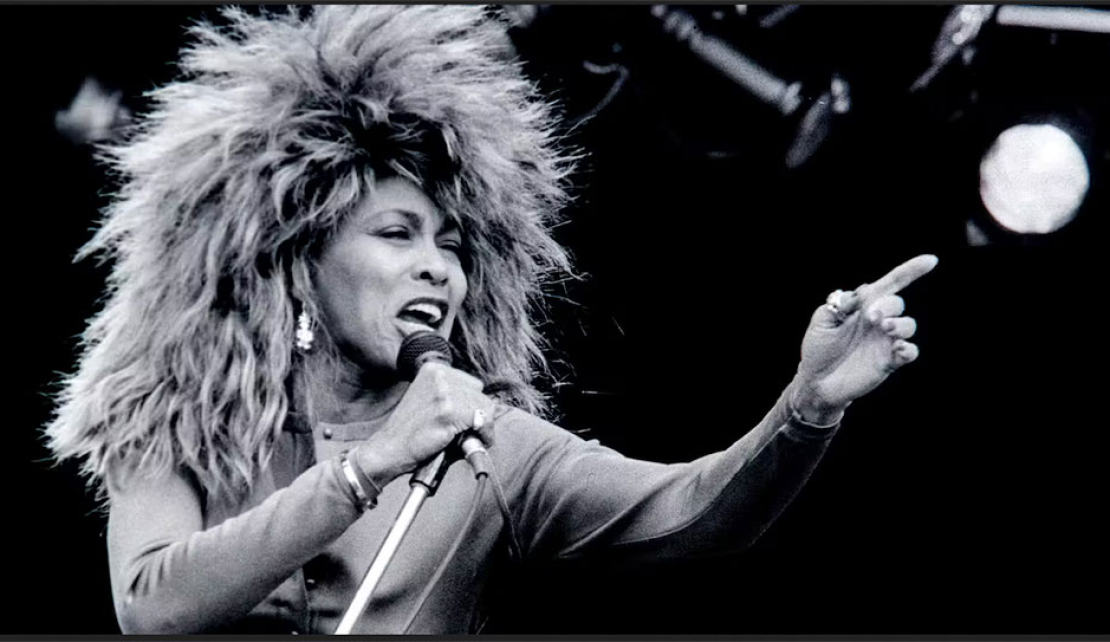UNITED STATES | Tina Turner: an immense talent with a voice and back catalogue that unites disparate music lovers

On a few rare occasions (often at the end of a night), I’ve confided to my friends that Tina Turner was one of my biggest celebrity crushes. The revelation has usually been met with some surprise, and not unreasonably. Born in 1939, Tina was older than my mother and nearly 40 years older than me.
But to me, she was a complete goddess from the moment I first encountered her. I vividly recall a white button-down shirt and figure-hugging blue jeans (probably the Foreign Affair tour of 1990) and an awakening of teenage desire.
Turner has died aged 83. Reflecting now on her 50-year-long career, I can see the threads that made her the perfect icon for the young queer feminist I was in the early 90s. She was a strong and resilient woman who escaped the control of abusive men and went on to forge a stronger solo career afterwards.
But her music also pushed boundaries of genre in ways that start to defy categories of gender, race and age, thereby changing the way female performers could be thought of.
In 1967, Turner was both the first Black artist and woman to appear on the cover of Rolling Stone. She remains the only Black woman to have been inducted twice into the Rock and Roll Hall of Fame. In 2013, she became the oldest person (at 73) to appear on the cover of Vogue.
Vocally, Turner was raised in the church, Spring Hill Baptist Church in Nutbush, specifically. However, her voice was different from the others she came up alongside.
Unlike Dionne Warwick, Aretha Franklin or Diana Ross, Turner’s voice had a grit and a rasp, qualities that always added an unexpected edge to her early work. It was also a sound that enabled her to move beyond soul and blues in her solo career.
A genre-fluid singer
Turner’s first solo album (in 1974) was country, replete with steel guitars and talk of the bayou. The very next year, she performed the role of the Acid Queen in film of The Who’s psychedelic operetta fantasy, Tommy. The role gave its name to an album featuring several notable rock covers by Turner, such as Led Zeppelin’s Whole Lotta Love.
Famously, she escaped from an abusive relationship with her singing partner Ike Turner, securing the rights to her stage name to her comparative financial detriment in their divorce settlement in 1978. Ike exerted his dominance in plain sight, slipping verbal threats of violence into a live performance of I’ve Been Loving You Too Long at a concert in Ghana (1971).
From the early 1980s, Turner made what has repeatedly been described as one of the most remarkable career comebacks of the century. The chart success of her cover of Al Green’s Let’s Stay Together (1983) came from left of field and the ensuing album, Private Dancer (1984) went platinum five times.
Private Dancer represented another musical turn, this time towards the electro-synth pop world inhabited by Heaven 17, whose Rupert Hine and Martyn Ware produced several of the songs.
The title song of the album exemplifies the narrative of Tina as a feminist powerhouse. Even 40 years on, the idea of a woman in her mid-40s singing a pop song about sex work is somewhat surprising.
It’s not just an allusion to sex work (like, for instance, Blondie’s Call Me). And it’s far from the many songs about female sex workers written and performed by men (take Roxanne by The Police or Killer Queen by Queen for instance).
Private Dancer is an explicit and unambiguous declaration of female desire and power in the first person. If anyone were in any doubt that Beyoncé owes a great deal to Turner’s trailblazing, her video for Partition is surely evidence, being a direct descendant of Private Dancer with its cage-dancing sex show.
Over her 14 solo albums, Turner developed a remarkable capacity to push through boundaries and exist between categories. Along the way, she also changed how a woman in popular music was positioned for consumption. This magic made her fans in all sorts of music listeners.
A musical uniter
Turner’s musical agility allowed her to inhabit contradictory musical spaces simultaneously. For instance, there is the Tina Turner who makes regular appearances on the setlists of DJs at retro club nights, inspiring inebriated patrons to shake their tail feathers in unison.
There is an exuberance here that crosses times and identities to bring a crowd together in the ritual of “rolling on the river”. It’s a song that also invites all shades of drag performance to honour it.
Then there is the Tina Turner who appears – frequently as the only woman, and perhaps uniquely as a Black woman – on compilations targeted at a predominantly male audience.
The world of “dad rock” and “driving anthems” is a stronghold of largely white, male baby boomers. Think Robert Palmer, ZZ Top, The Jam and Whitesnake. There alongside them is Turner with songs like The Best, We Don’t Need Another Hero and Nutbush City Limits.
Tina Turner’s capacity to transcend these borders of genre, and with them, borders of race, age, and gender, is what made her the absolute legend that she was. To me, it will also always represent a hybridity that calls to my identity as a queer feminist.
Freya Jarman, Reader in the Department of Music, University of Liverpool
This article is republished from The Conversation under a Creative Commons license. Read the original article.

 En
En  Ar
Ar